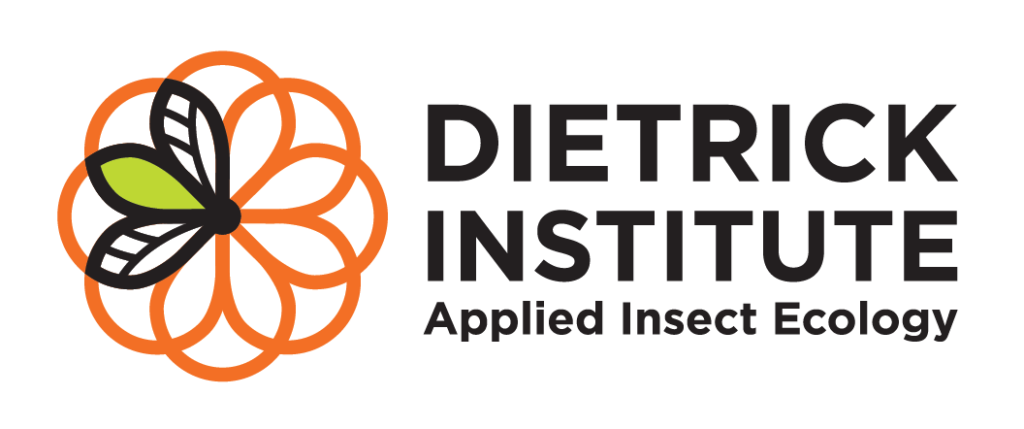 Input for Policies Agriculture Chapter – VC2040 General Plan Update
Input for Policies Agriculture Chapter – VC2040 General Plan Update
GOAL A – Engage land managers in the statewide carbon sequestration accounting framework for tracking storage of above and below-ground carbon.
POLICIES
- Land Management and Multi-Benefit Assessment Tools. Collaborate with state agencies and non-governmental organizations to deploy appropriate available tools and protocols for defining baselines, setting targets, and measuring changes in carbon sequestration.
- Maps. Develop plans and strategies using maps to identify vegetation densities layered with carbon density and site suitability.
- Collaborate to set and track targets. Form partnerships with Cal State University Channel Islands, University of Santa Barbara, Ventura County Community Colleges and non-governmental organizations to plan and evaluate the system for setting and tracking carbon sequestration targets for different land uses and cropping systems.
- Mitigation ratios tied to carbon density. 4:1 minimum mitigation ratios will be applied to impacts to healthy forest, multi-strata agroforestry, riparian cottonwood stands, coastal wetland and riparian habitat, and carbon-dense deep-rooted perennials to protect the county’s existing and expanding carbon sinks.
- Adaptive management. Use a plan-do-reflect-improve process to meet carbon sequestration targets with a monitoring program to detect the needed information for evaluation that links back to the plan and monitoring, tuning in to new technologies and climate protection science to find continuously higher-level, more comprehensive goals that match the scale, variety and unpredictability of climate hazards.
PROGRAMS
Land Management and Multi-Benefit Assessment tool to be completed during 2018 for use by all counties. Short slide presentation here.
Farmland Mapping and Monitoring Program (FMMP)
Strategic Agricultural Lands Conservation(SALC) Program
Merced County Collaboration is a model for land use, land management and conservation activities.
BACKGROUND
The following is the list of land types used by the state’s Land Management and Multi-Benefit Assessment tool for the purpose of defining existing and potential carbon sinks with partial data filled in for Ventura County:
Forest/Woodlands (federally owned)
Forest/Woodlands (non-federally owned)
Shrublands
Grassland – 200,000 acres
Grazing land – 198,000
Wetlands – 1500 Mugu Lagoon, historically 3,000, could be three times that countywide in the 3 watershed estuaries and riparian areas?
Barren
Orchards (woody perennial crops-fruit and nut trees) 43,500 acres
Vineyards – some of the 43,500 above?
Annual vegetable crops (conventional, i.e. artificial N inputs) 37,300 ac
Annual crops (regenerative/sustainable/organic/biodynamic) 8,200 ac
Non-woody perennial crops 100 acres herbaceous perennials
Irrigated pasture
Urban and built up 106,000 (how to inventory trees and community forests)
GOAL B: Increase biological carbon sequestration on farmland, grazing land, and other non-forested, non-wetland, natural and working lands
POLICIES
- Obtain baseline data for above and below-ground carbon on farm and grazing land. Set and track achievement of targets for carbon sequestration on working lands, prioritizing study and truth-testing on rangeland carbon farming, silvopasture, multistrata agroforestry, and other enterprises with high carbon density.
- Managed grazing as a beneficial use. Categorize as a beneficial use those acreages where managed grazing is practiced to slowly build a soil-carbon sponge.
- Partnerships. Facilitate local partnerships to study carbon sequestration achievement to verify targets and strategies for expanding carbon sinks on working lands.
- Science-based technical assistance. Study and promote knowledge and understanding about best practices for building soil-carbon sponges, including on-site water harvesting, green growth, and healthy soils in integrated natural systems.
- Reward carbon farmers. Collaborate with stakeholders to create a program to reward land managers who preserve and enhance natural and working lands including trees, vegetation, and soils to reach their potentials for carbon sequestration..
- Restoration of small water cycles. Promote best practices for restoring small water cycles by appropriate stormwater harvesting to support revegetation, particularly of native species, to include healthy trees which are “nature’s most efficient carbon sinks” and provide a vital role in small water cycles.
PROGRAMS
Healthy Soils Initiative – a collaboration of state agencies led by California Department of Food and Agriculture to promote the development of healthy soils on farm and ranchlands through grants for innovative practices that contribute to building soil organic matter to increase carbon sequestration and reduce overall GHG.
Carbon Farming Rewards Program – A collaboration of local organizations to develop, test, demonstrate, and document achievements in carbon sequestration. Identify working lands with above average potential for carbon sequestration including deep-rooted perennial grasses by applying compost, and support increasing availability of local compost for application to prioritized lands for carbon farming. Reward appropriate achievements on an annual basis using the most simple, common sense metrics, toward short- and long-term targets for carbon sequestration inviting all owners or managers of working lands of two acres or more in size potentially including as a secondary priority public lands, regardless of the number of property owners and regardless of when or by what strategy the carbon was sequestered.
JUSTIFICATION
Healthy soil is the best medium for growing healthy, resilient, disease and pest resistant plants in part because the interaction of soil microbes with plant roots supports an optimal soil-carbon sponge and provides the cation exchanges and symbiosis with fungi that screen out toxic minerals and optimize plant mineral content for highest nutritional value.. (http://www.nrcs.usda.gov/wps/portal/nrcs/main/national/soils/health/).
Health of agricultural soil relates to its ability to build and retain adequate soil organic matter via the activity of plants and soil organisms. Adequate soil organic matter ensures the soil’s continued capacity as a vital living ecosystem with multiple benefits for producing food for animals and humans. The multiple benefits of healthy soil include:
- Provides nutrients that support plant growth, biodiversity and yields.
- Increases water infiltration, reduces runoff, able to hold up to 20 times its weight in water; assists flood management.
- Sequesters carbon reducing greenhouse gases
- Reduces sediment erosion and dust
- Improves water and air quality by reducing emissions of criteria pollutants and the persistence of pesticides in soil and water.
- Improves habitat for wildlife and beneficial organisms including a diversity of soil-borne organisms that constitute a quarter of the world’s species.
GOAL C – Promote biological pest management.
POLICIES
- Eliminate county use of toxic pesticides. The County will not buy or promote the use of (Danger Label) pesticides.
- Training in biological pest control. The Agriculture Commission will sponsor an on-going training program for biological pest control for all crops grown in the county.
- Biological pest control expertise and technical assistance at all agriculture teaching, research and extension institutions. The Ventura County Cooperative Extension, 4-H, Master Gardeners, Ventura County Community College District and the School Districts will employ people who can teach biological control and help practitioners release the potential of natural systems on farms, landscapes, and gardens.
PROGRAM
San Franciso Integrated Pest Management Ordinance of 1996
Cities of Irvine and Santa Monica
GOAL D – Expand and localize the agricultural economy
POLICIES
- Value-added processing. Support new local processing of food, fiber, and flowers.
- Production and processing of and manufacturing with industrial hemp. Advocate for and explore the development of industrial hemp through education about the health, environmental, and economic benefits and building a community of individuals, businesses and organizations with production, processing fiber and seeds, manufacturing into food, paper, fabric and construction materials, and marketing know-how.
- Tourism. Promote rural, ag and nature tourism that includes resorts, farmers’ markets, tours, and other leisure and hospitality businesses that attract visitors to enjoy nature.
JUSTIFICATION
Industrial hemp has been prohibited for irrational reasons over seventy years. The California Industrial Hemp Farming Act (Senate Bill 566, Chapter 398, Statutes of 2013) was signed into law to authorize the commercial production of industrial hemp in California. The Act became effective on January 1, 2017, due to a provision in the Adult Use of Marijuana Act (Proposition 64, November 2016).
As directed by this Act, the California Department of Food and Agriculture (CDFA) is developing a program to administer this new law and administer a registration process, fee structure, regulations, and other administrative details as necessary to provide for the commercial production of industrial hemp in accordance with the Act.
GOAL E – All organic waste streams will be processed for compost or mulch.
POLICIES
- Mandatory recycling or composting of food and yard waste. All food wholesalers, retailers and food service operations will separate food for recycling or composting and prevent biodegradable materials from going to the landfill.
GOAL F – Promote local regenerative agriculture
POLICIES
- Regenerative agriculture certification programs. Promote regenerative agriculture certification programs that reduce GHG emissions and/or enhance carbon stocks or increase sequestration agriculture practices that also help preserve agricultural productivity and ecological health.
- Property tax waiver. Waive property tax for land that is farmed according to the Regenerative Agriculture Certification Practices and/or the USDA Certified Organic Program for the first three years of transition to and first three years after the land is certified for the first time.
- Marketing local regenerative products.. Promote local, regenerative food and ag products
- Farmers’ Markets. Promote local farmers’ markets to provide communities with local food grown by regenerative practices.
- Regenerative agriculture education. Promote awareness through the public schools and community colleges about the importance of local regenerative agriculture methods for climate mitigation and resilience
- Teach farming skills in public schools. Offer a Regenerative Farming Technology course in the high schools.
PROGRAM
Regenerative Agriculture Certification Program
Regenerative Farming Skills School Curriculum
Soil Foodweb Practitioner Certification Program
Certified Farmers’ Markets
Food Forward and other gleaning organizations
Food to Compost/Food to Energy Program (example Monterey Regional Waste Management Facility)
JUSTIFICATION
Regenerative agricultural systems represent a higher social and environmental value than systems labeled sustainable or organic, because they aim to release the potential of whole natural systems using such practices as low or no tillage, diverse cover crops, in-farm fertility minimizing external nutrients, no toxic pesticides or synthetic fertilizers, and making the most of crop rotations. Regenerative systems hold the greatest potential for achieving climate mitigation and resilience through improvements in carbon- and water-holding capacity.
From Drawdown: Regenerative agriculture worldwide is estimated to be at 108 million acres that will increase to a total of 1 billion acres by 2050. This rapid adoption is based in part on the historic growth rate of organic agriculture, as well as the projected conversion of conservation agriculture to regenerative agriculture over time. This increase could result in a total reduction of 23.2 gigatons of carbon dioxide, from both sequestration and reduced emissions. Regenerative agriculture could provide a $1.9 trillion financial return by 2050 on an investment of $57 billion.
Silvopasture according to Drawdown “far outpaces any grassland technique for counteracting the methane emissions of livestock and sequestering carbon under-hoof. Pastures strewn or crisscrossed with trees sequester five to ten times as much carbon as those of the same size that are treeless, storing it in both biomass and soil.”
County or regional certification. The most reliable and accepted certification programs are locally controlled rather than by CDFA or USDA because of greater transparency and shared values. The National Organic Program has been weakened and obfuscated to the point that hydroponic vegetables can be labeled organic without being labeled hydroponic.
GOAL G – Promote local and global agricultural climate preparedness and food security and equity
POLICIES
- Agricultural resilience. Promote peer-to-peer networking to develop agricultural resilience, including alternative crops or adopting new agricultural land management strategies.
- Local farm product distribution over exports. Promote local food and ag products by supporting local farmers’ markets, farm to schools and hospitals, and other markets for local agricultural products.
- Avoid exporting to places that can grow their own. Promote awareness of the full impacts our exports may have on the development of agricultural climate preparedness, food security and equity in other countries.
- Cost of farmland. Reduce the high cost of land for food production.
- Food hubs and food cooperatives. Encourage growth of food hubs and coops with at least one in each of the four major geographic areas of the county that support local farmers for their natural resource stewardship, job development, contribution to public health, food system equity and climate resilience while providing wide access to fresh quality local food, especially in neighborhoods recognized as food deserts.
- Urban gardens and farms. Promote urban agriculture through encouragement of amended zoning codes and provision of recycled water to allow and support urban farming and gardens in appropriate areas of every neighborhood.
- Neighborhood garden sales. Do not legally categorize as “farmers’ markets or farm stands” regular events where neighbors convene to sell surplus produce, similar to yard sales.
PROGRAMS
Farm to School
Community Gardens
Food hubs
JUSTIFICATIONS Changing temperature and rain patterns, especially drought, require new strategies, and may result in higher food prices. The farmer population is aging; young farmers cannot afford land. Venturans depend on imports for over half of the food supply while freight costs for commodities exports will rise Ventura County’s exports are produced with cheaper fuel relative to most other countries. We can monitor the potential harm our exports could have on farmers in other places so that all communities can be food secure while doing their part to sequester carbon.

